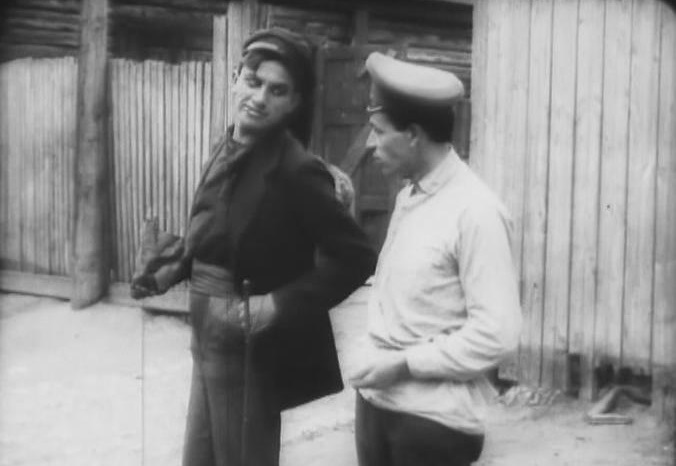
History 07/03/20 Bullies: why Soviet citizens were so afraid of teenage gangs
In the 1920-ies the Soviet government gradually taking root on the territory of the former Russian Empire. The counter-revolution was defeated and just on the outskirts of the Red Army has finished off the enemies of the country workers. However quiet life after the victory did not come. The Soviet city was swept by a wave of terror by thousands of hooligans, who during the Civil war no longer afraid of the authorities and to value human life.
the Scale of a national calamity
According to the statistics of the NKVD, the urban population was 17%, but it accounted for 40% of crimes. In Leningrad from 1923 to 1926 the number of those convicted of public order offenses increased 10-fold, and their share among prisoners increased from 2% to 17%. For the first half of 1928 in cities of the RSFSR was instituted 110 thousand criminal cases on hooliganism.
Under the hooliganism was understood a variety of actions: swearing, shooting from firearms, noise, shouting, drinking naughty or obscene songs and rhymes, wetting of the citizens with sewage, the device of obstructions on roads, fights and fights. So, 32% of detainees in 1926 he was arrested for beating passers-by, 28% – for a brawl in a drunken state, 17% for abuse, 13% – for resisting police officers.
the causes of the activation of the movement of the bullies
the First use of the term “bully” was recorded in Russia in 1892. This word appeared in the order of St. Petersburg mayor von Val, who demanded to take measures against the raging in the city, violators of public order. The Imperial penal code of the crime of disorderly conduct, did not exist, and it appeared already under the Communists, when the scale of this phenomenon is enormous.
In the twentieth century began the rapid growth of cities, the population of which was added to pereselenetsAMI’s village. Most of these were young men. As a result, even in tsarist times, the female population in large settlements accounted for only 35-40% of the total mass of the townspeople.
the city’s energetic young boys from the village had been without control of the rural community that caused them a feeling of permissiveness. The vast majority of bullies were from 12 to 25 years. Many years of war, revolution, famine, pestilence and death traumatized their teenage psyche. Therefore, as psychologists say, they have seen increased nervousness, hysteria and a tendency to violence. Of the surveyed in 1927 teenagers Penza of 31.5% was recognized as a neurotic, and 94% of working teenagers have been identified in various nervous diseases.
Particularly difficult situation at work the outskirts of Moscow and Leningrad. Aggravated the overall situation of the epidemic of syphilis and gonorrhea. Among the bullies of the NEP number “veneration” reached 30%
According to contemporaries, because of the war and the revolution, a large number of persons with disabilities and travmatikov with the weakened nervous system. These people have alcohol and drugs provoke the violent reaction which was manifested as an aggressive uncontrollable behavior.
According to researcher mishustina, in the 1920s, 95.5% of the detained thugs were drinking, of whom 62% were drinking alcohol constantly, and 7% were dependent on drugs. 45% of bullies were homeless and they replaced family with friends.
Bullies those times wore flared trousers and jackets, similar to sailor jackets. Their main weapon other than fists was the brass knuckles, knife Finca, as well as tapestries, as they are called revolvers. Gang of teenagers in the evening, attacked leaving work workers and school students. Often bullies lined up in a chain along the street or the town square and stop any person passing by. Threatening, they took away the property of a passer-by or beat it.
the Growing threat
the Level of aggression increased, and orgrisovannoj helped the bullies not only to commit a single crime, but also to hold mass protests to intimidate the population. In Leningrad they burned the plant Kooperator and train depots. It turned out that it was by the organization “Union of Soviet hooligans”, which was listed as 100 people.
In Kazan, the hoodlums tore campaign flight, threw stones at the plane and the pilot. In Penza they launched a guerrilla war. In particular, the dismantled railway and in 1925 he derailed three trains. In 1926, armed with knives, the gang dispersed Komsomol rally in the centre of Novosibirsk, this was beaten as the Komsomol and the militia.
Bullies paralyzed the life of Soviet cities. And the public demanded more stringent measures against them. Until 1922 article “Hooliganism” provides for the punishment of correctional work or a year in prison. In rare cases, can give up to 10 years in prison or even shot. In 1930, the term of punishment has been raised to 3 years, and in 1935 – up to 5 years imprisonment. To combat the movement was used by the voluntary workers ‘ militia and the strike group that organized searches and raids. To eradicate hooliganism in the Soviet Union only managed to 1941.
Alexander Brazhnik
Source:
© Russian Seven
Recommended statesalaska… Share: Comments Comments on the article “Bullies: why Soviet citizens were so afraid of teenage gangs” Please log in to leave a comment! br>
Share on Tumblr
















